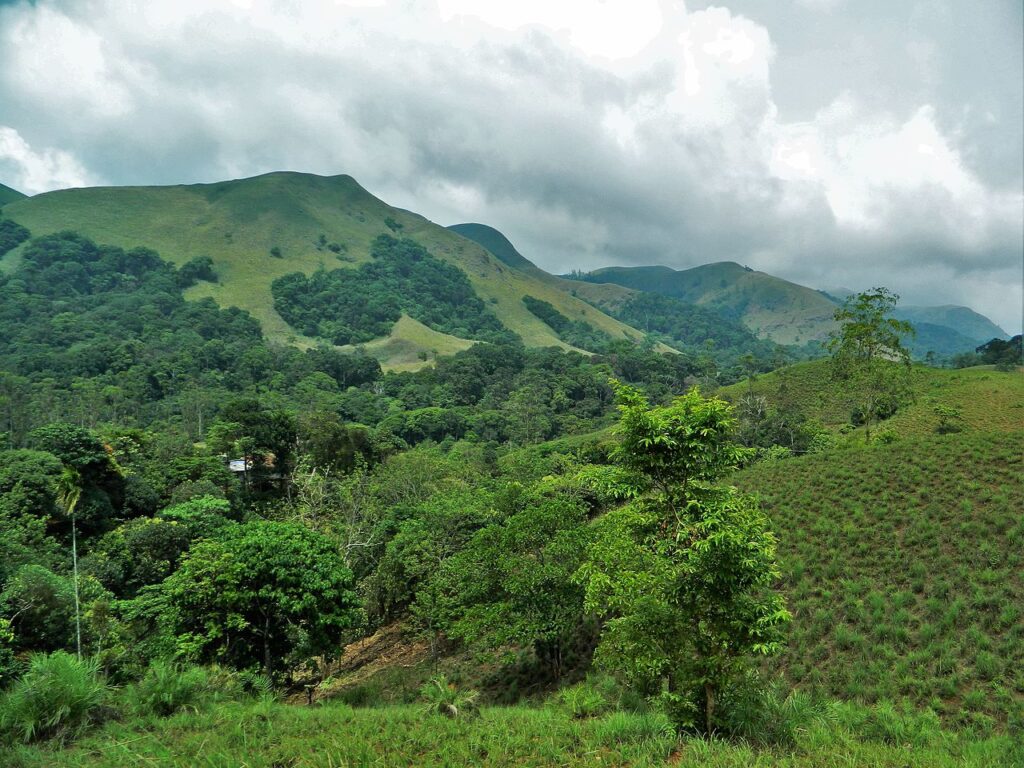The Western Ghats of India is a mountain range that stretches along the western coast of the country, covering an area of over 160,000 square kilometers. This range is home to an incredibly diverse array of plant & animal species, many of which are found nowhere else in the world. Let’s explore the biodiversity and endemism of the Western Ghats and the conservation efforts being undertaken to protect this important hotspot.

Hottest hotspot
The Western Ghats is considered to be one of the world’s eight “hottest hotspots” of biodiversity, with over 7,400 species of flowering plants, 139 species of mammal, 508 species of birds, and 179 species of amphibian recorded in the region. The high levels of endemism found in the Western Ghats are particularly noteworthy, with over 5,000 plant species and 325 animal species being endemic to the region.
One of the most significant factors contributing to the high levels of biodiversity in the Western Ghats is the region’s unique geology and topography. The mountain range has a diverse range of habitats, including montane forests, grasslands, and wetlands, which support a variety of plant and animal species. The Western Ghats is also home to several major river systems, which provide vital water resources for both humans & wildlife. Unfortunately, not many people appreciate the bidovierse Shola grasslands of the Western Ghats, which is being rampantly destroyed.
Endemic fauna of Western Ghats
The Western Ghats is home to a range of iconic and unique animal species, including the lion-tailed macaque (Macaca silenus), the Malabar giant squirrel (Ratufa indica), and the Nilgiri tahr (Nilgiritragus hylocrius). The lion-tailed macaque is a primate known for its distinctive appearance, with a mane of long, black hair around its face. This is a critically endangered species that is found only in the Western Ghats.
The Malabar giant squirrel is another unique species found in the Western Ghats, known for its striking coloration & impressive size, with some individuals growing up to three feet in length. The Nilgiri tahr is a type of mountain goat that is found only in the high-altitude regions of the Western Ghats. This species is adapted to life in rocky mountainous terrain with hooves that provide excellent traction on steep slopes. It is also home to some of the most biodiverse birdwatching hotspots.
Flora of Western Ghats
The plant species found in the Western Ghats are equally diverse and unique. The region is home to several endemic plant families, including the Myristicaceae (nutmeg family) & the Dipterocarpaceae (a family of tropical hardwood trees). The Western Ghats is also known for its large number of species in the genus Syzygium, which includes many important food and medicinal plants. The forests of the Western Ghats are also home to a range of bamboo species, which are important for soil conservation and provide habitat for a variety of animal species.
Threats faced by Western Ghats
The Western Ghats are facing a range of threats, including habitat loss and degradation, overexploitation of natural resources, climate change etc. Many of the forests in the region have been cleared for agriculture, grazing, and timber harvesting, leading to habitat fragmentation & loss of biodiversity. Overexploitation of natural resources such as firewood & medicinal plants is also a major concern, particularly for local communities who rely on these resources for their livelihoods.
Conservation efforts
In recent years, there has been a growing recognition of the need to conserve the Western Ghats, with several protected areas being established in the region. One such example is the Nilgiri Biosphere Reserve, which covers an area of over 5,500 square kilometers and is home to a range of important species, including the lion-tailed macaque and Nilgiri tahr.
Given that Western Ghats of India is a unique and important hotspot of biodiversity and endemism, providing habitat for a remarkable array of plant and animal species. The Western Ghats serves as a reminder of the incredible diversity of life on our planet and the importance of preserving it for the benefit of all.
Help us Help Them! Think Wildlife Foundation is a non profit organization with various conservation initiatives. Our most prominent campaign is our Caring for Pari intiative. Pari is a rehabilitated elephant at the Wildlife SoS Hospital. 25% of the profits from our store are donated to the elephant hospital for Pari. Other than buying our wonderful merchandise, you could donate directly to our Caring For Pari fundraiser.
Written by: Ram Dayal Vaishnav
